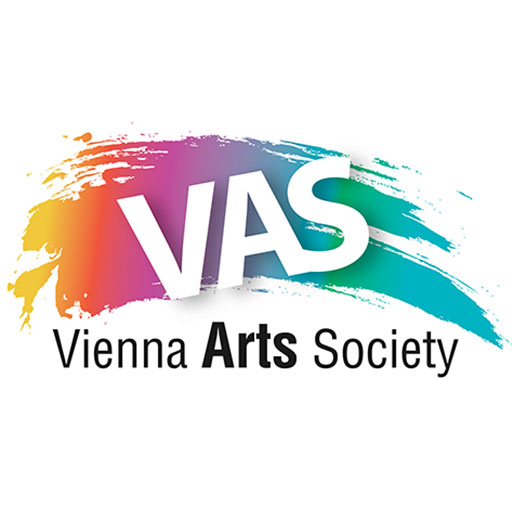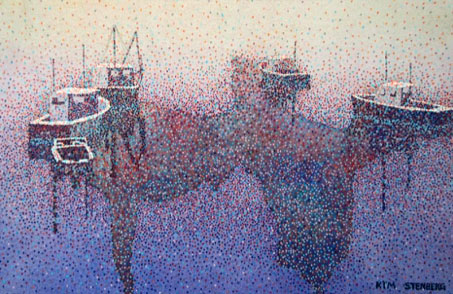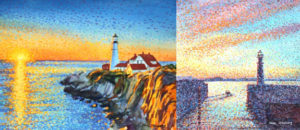Saturday, January 11, 2020 Time: 10 am to 4 pm
@ Vienna Art Society 243 Church St. Suite 100 Lower Level, Vienna, Va
Cost: VAS Member: $85; Nonmember: $95
TO RESERVE YOUR SPOT:
Option 1: Mail your check made out to Vienna Arts Society with “Watercolor/Pointillist” written in the memo line; include a note with your name and contact info to Vienna Art Society Art Center 243 Church Street NW, Suite 100 LL, Vienna, VA 22180. OR
Option 2, if you want to pay by credit card please call the Art Center: 703 319-3971.
Payment is due to reserve your spot.
*(Cancellation Policy: A refund of 90% if cancel by December 11, 2019; thereafter 90% refund available ONLY if there is another artist to take your space).
Let’s walk in the footsteps of Georges Seurat by throwing dots around! As you may be familiar with the famous post-impressionist technique initiated by the methodical Seurat, pointillism takes advantage of the optical mixing of colors, placed side by side, not on top of each other. Dots and dashes make no sense until you walk a few feet or yards backwards. The seemingly haphazard broken strokes arrange themselves into shapes and designs in gloriously luminous colors, unsullied by overmixing. In this workshop, I will demonstrate how to create a “new Pointillist” composition and also how to rescue a “failed painting” with the Pointillist technique. For the workshop, you have the choice of either working on an existing painting or on a new one. The size of the painting is up to you but no larger than 16 x 20.
I have been experimenting with pointillism since 1995 when I saw some students in Pat Barron’s colored pencil class making dots on paper that had been colored in watercolor washes. The painting below, “Maine Event” (2000), is an example of watercolor painting, enhanced with colored pencil dots. By that time, I had become a watercolorist and occasionally brought my Prismacolor pencils out and added dots on “failed” watercolor paintings for fun and with fascinating results. Two decades later, I now work both in oil and watercolor. After having worked in the impressionist style of Sara Linda Poly, I have begun to gravitate toward pointillism when painting landscapes.
Unlike the creamy blending quality of oil paints, with which I could paint at ease an entire painting with dots, or add dots on a blocked-in painting, when I tried colored pencil dots on watercolor paintings lately, alas, I found the process tedious and painful to my arthritic hands. Instead, I turned to gouache, with which I have recently begun to experiment with some success. The results are exciting. “Yaquina Head Lighthouse Sunset” (watercolor and gouache, 2019 ABOVE) was first conceived as a transparent watercolor, a failure in execution, then rescued with gouache dots. I may also start a watercolor painting with the intention of adding dots later.
So that’s what we are going to do. If you are participating in the watercolor portion on Saturday, bring a painting you are not happy with. Landscapes with sky or sea, or both seem most amenable to the pointillist technique. Nothing too detailed; designs with big shapes work better.
In the class you will add dots. How? One by one. How do you decide which colors? I used to say, intuitively. If I must explain it analytically, I’ll say first start with analogous colors to the area, then become bolder with complementary colors. What if your chosen colors don’t work? Paint over with new dots. It could be hue, temperature, intensity, or value that is off. By the end of the day, your color sense will have become significantly enhanced.
Kim’s Bio
Kim was born in Seoul, Korea in 1959. She came to the United States to study history and received a PhD degree in British history at the University of Minnesota in 1993. Soon after she earned the final degree, she decided to take art classes at the Art League School in Alexandria, VA and it turned out to be a life-changing decision. She has been using both sides of her brain ever since.
Kim started out with the medium of colored pencil, then moved on to watercolor. Her first entry in a juried show at The Art League won the Best in Show award in 1996. Many other honors followed. She currently works in oil, watercolor, and gouache as well as mixed media.
Recently Kim started teaching art at The Art League School in Alexandria, VA. When teaching, Kim is in her element. She has been at it since in college, teaching English, history, and now art. She believes that drawing and painting are skills anyone can learn. With passion and patience, Kim wishes to aid the unleashing of a student’s innate creativity.
Supply List for Watercolor/Gouache Pointillist Workshop with Kim Stenberg
The following list is just to show my favorite supplies. I assume that the workshop participants are all experienced watercolorists, so please bring the things you usually have.
The only new thing you may want to get specially for the workshop is the Artists’ Gouache Titanium/Permanent White (I recommend Winsor Newton, M. Graham, or Holbein). In case you want to invest in an introductory set of gouache, here are a couple of options. Winsor Newton has a set of 10 designers gouache for $54; Holbein has a set of 12 artist’s gouache for $40.29 (both on dickblick.com). (Holbein has a line of Acryla gouache; they are matte acrylic paints. Please don’t buy them!)
This is not something you purchase, but something you already have. Bring a “failed” landscape/seascape/skyscape painting or two. You can always start a new watercolor painting and add dots in gouache. But it’s only a one-day workshop, so we may not have enough time. The technique seems to work best with landscapes or cityscapes with big skies/sea or both, not so much with portraiture, still life, floral, etc.
- Paints: Buy only artist quality paints. I recommend Winsor & Newton Professional watercolor paint tubes. I also like Daniel Smith, Holbein, Schemincke, and Sennelier. You may not heard of some of the colors; they are my favorites and are not essential.
- Yellows: Cadmium Lemon Yellow, Cadmium Yellow Pale, Quinacridone Gold
- Reds: Cadmium Red, Permanent Rose, Brown Madder (Holbein), Helios Purple (Sennelier)
- Blues: French Ultramarine Blue, Cobalt Blue, Cobalt Turquoise Light
- Orange: Cadmium Orange
- Violets: Mineral Violet (Holbein)
- Greens: Serpentine Genuine (Daniel Smith), Cascade Green (Daniel Smith)
- Browns: Piemontite Genuine (Daniel Smith)
- Darks: Indigo, Moonglow (Daniel Smith)
- Flesh Tones: Rose Dore (Winsor Newton), Naples Yellow Reddish (Schmincke)
- Palette: a large plastic palette with a lid. My favorite is Mijello Fusion Air-Tight Watercolor Palette, which you can order online. I have the small size with 18 wells. I also use several different watercolor boxes. An enameled butcher tray palette is nice too. In other words, use whatever palette you like.
- Paper: Artist quality 100% cotton rag paper, such as Arches or Fabriano, either in full sheets or blocks with glued edges.
My favorite papers are Arches 140 lb cold press and Fabriano 140 lb or 300 lb hot press extra white.
You can also use a sketchbook (it reduces the stress of “wasting” expensive watercolor paper!). I love Strathmore 500 series Mixed Media Art Journal (7.75” x 9.75”). I prefer softcover, because it lies flat.
Brushes: 3 round brushes (large, medium and small, such as 12, 8 and 6), a flat brush or two (1” is useful). Robert Simmons white sable watercolor brushes are decent. I use all kinds of brushes, including expensive Winsor & Newton Series 7 Kolinsky Sable watercolor brushes and plastic Pentel Aquash water brushes. It’s not the brushes that make the difference; it’s the artist’s touch!
Having tried different brushes to make dots in gouache for the workshop, I am beginning to favor a Pentel Aquash water brush (small size). They say gouache is harsh on brushes, so let’s not use expensive sable brushes. In any case, bring some small round brushes to see which one works better for you.
Misc: no. 2 pencil
- Kneaded eraser
- Board (if you are using loose sheets of watercolor paper)
- Clips or artist tape to fasten the paper to the board
- Paper Towels (Viva)
- Small spray bottle
- Color Wheel


